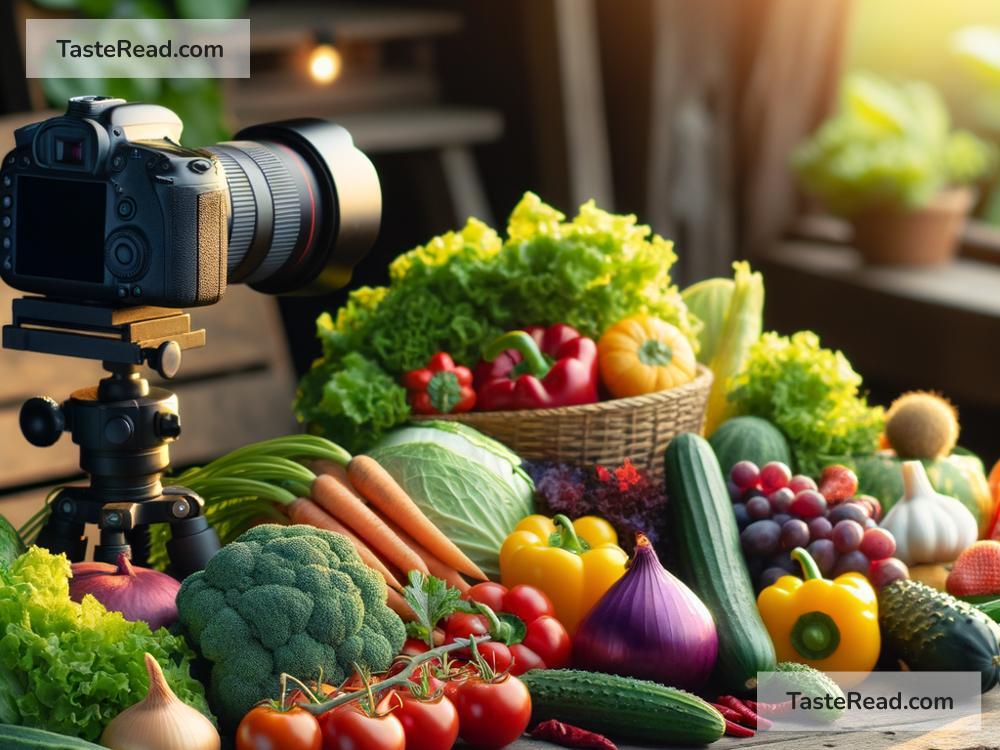Capturing the Essence of Freshness in Food Photography: A Simple Guide
Food photography is a fascinating field that blends art and appetite. It’s about making your viewers almost taste the freshness and flavors through their screens or pages. Imagine scrolling through your feed and pausing at a vibrant, mouth-watering image of a salad, with the greens looking so fresh they could have been picked seconds ago. Or a shot of strawberries so glossy and red that you can almost feel their juiciness. That’s the magic of capturing freshness in food photography. But how do you achieve this? Let’s dive in.
Start with the Freshest Ingredients
The journey to capturing freshness starts way before the camera is even turned on. It begins at the market or in your garden, selecting the freshest and most vibrant ingredients. Look for bright colors, crisp textures, and signs of life in the ingredients. Wilting leaves, bruising on fruits, or dullness in color will not translate well in photos, no matter how many tricks you try later on.
Lighting is Key
Light plays a paramount role in conveying freshness. Natural light is your best ally here, as it closely resembles how we see food in real life. Position your setup near a window with abundant natural light. Morning or late afternoon light tends to be softer, avoiding harsh shadows that could detract from the fresh look of your food. Use reflectors (even a simple white board will do) to bounce light into shadows, ensuring the ingredients’ textures and colors pop.
The Right Angle and Composition
Choosing the right angle can make a world of difference. Some dishes look best when shot from above, allowing you to showcase all the fresh components in detail, like a colorful bowl of salad or a pizza with vibrant toppings. Other times, a side view might be more effective, especially to highlight layers or the juiciness of a perfectly cooked steak. Play around with angles to find what best highlights the freshness of your dish.
In terms of composition, simplicity often wins. You want the fresh ingredients to be the stars. Use plain backgrounds and minimize clutter. Sometimes, an individual ingredient like a dewy fresh tomato or a crusty loaf of bread against a simple backdrop can convey freshness more powerfully than a complex setup.
Timing and Moisture
Capturing the essence of freshness often means working quickly. Prepared dishes tend to lose their lively look over time. Have your setup ready so that you can take your shots soon after the dish is prepared. For added freshness, a little trick is to use a spray bottle with water to mist your veggies or fruits lightly. Be careful though – too much water can make your food look soggy instead of fresh.
Color and Contrast
Vivid colors and contrast are your allies in highlighting freshness. Enhancing the natural colors of your ingredients can be done during shooting with proper exposure and post-processing. A slight boost in saturation and contrast can make the colors more vibrant but avoid overdoing it, or the food might look unrealistic. Remember, your goal is to enhance, not to alter significantly.
Use of Props
Props can help tell a story of freshness. Consider including fresh-cut herbs, cooking utensils, or raw ingredients in the background. These elements can suggest the idea of fresh cooking and enhance the perception of freshness. However, make sure that the props don’t overshadow the main subject. They should complement, not compete with, your dish.
Editing with a Light Touch
In the editing phase, your mantra should be “enhancement, not transformation.” Adjusting brightness, contrast, and saturation are all acceptable to bring out the colors and textures of fresh food. However, keeping edits minimal ensures that the food remains natural and appetizing. Software like Adobe Lightroom offers tools to selectively brighten or enhance colors without affecting the whole image, giving you more control to highlight the freshness where it counts.
Conclusion
Capturing the essence of freshness in food photography is about combining artistry with authenticity. By selecting the freshest ingredients, mastering the light, choosing the correct angles, and using simple editing techniques, you can make viewers feel the crunch of lettuce or the tenderness of ripe fruit just by looking at your photos. It’s about creating images that not only look delicious but feel alive. With practice, patience, and passion, your food photography can truly bring the essence of freshness to life.


